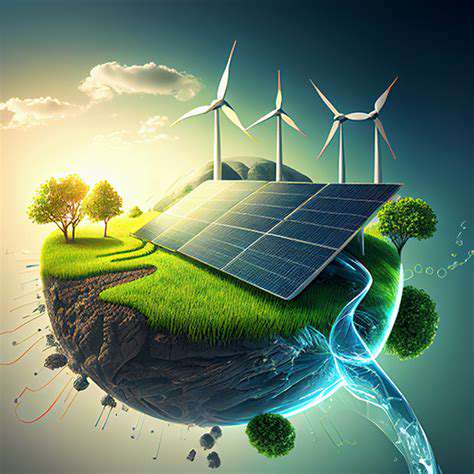The Role of Renewable Energy in Sustainable Urbanization
The Benefits of Integrating Renewable Energy Technologies
Harnessing Solar Power for a Sustainable Future
Modern solar installations demonstrate how far photovoltaic technology has progressed. Building-integrated photovoltaics now blend seamlessly into facades and windows, while floating solar farms create dual-use spaces on reservoirs. Advanced tracking systems allow panels to follow the sun's path, boosting output by 25-35% compared to fixed installations. Perhaps most exciting are developments in perovskite solar cells, which promise even higher efficiencies at lower production costs. These innovations make solar energy accessible in dense urban areas previously considered unsuitable for renewable generation.
Wind Energy: A Powerful Force for Change
Urban wind energy has evolved beyond the traditional turbine model. Architects now incorporate wind-capturing designs into skyscrapers, where the building itself becomes a power generator. Vertical-axis turbines, which perform better in turbulent urban wind conditions, can be installed on rooftops throughout the city. Some municipalities have repurposed old communication towers as wind energy hubs. These distributed systems collectively contribute significant clean energy while raising public awareness about renewable options.
Hydropower: A Legacy of Sustainable Energy
While large dams face increasing environmental scrutiny, new hydro technologies show promise for urban settings. In-pipe hydro systems generate electricity from water flowing through municipal supply networks. Tidal lagoons and low-head turbines can harness energy from urban waterways without disrupting ecosystems. Some cities have even installed micro-hydro systems in their stormwater drainage networks. These innovative approaches demonstrate that hydroelectric potential exists even in flat urban landscapes.
Geothermal Energy: Tapping into Earth's Heat
District heating systems using geothermal energy can provide carbon-free warmth to entire neighborhoods. Modern heat pump technology allows buildings to exchange heat with the ground, providing both heating and cooling from the same system. Some cities have mapped their underground thermal resources to identify optimal locations for geothermal development. These systems are particularly valuable in colder climates where heating demands dominate energy use.
Biomass Energy: Converting Organic Matter into Power
Urban biomass solutions focus on converting waste streams into energy. Anaerobic digesters process food scraps from restaurants and households into biogas. Some wastewater treatment plants now generate more energy than they consume through sludge-to-energy systems. These approaches turn disposal challenges into energy opportunities while reducing landfill methane emissions.
Policy and Planning for a Renewable Energy Future

Policy Framework for Renewable Energy
Effective renewable energy policies balance ambition with practicality. Leading cities have implemented solarize programs that streamline permitting and reduce soft costs through bulk purchasing. Some have created clean energy districts with special zoning for renewable projects. The most successful policies align building codes, utility regulations, and financial incentives to create a coherent ecosystem for clean energy adoption. Regular policy reviews ensure measures remain effective as technologies evolve.
Planning for Infrastructure Development
Urban energy planning now incorporates sophisticated modeling tools to optimize renewable integration. Geographic information systems identify rooftops suitable for solar panels, while wind mapping pinpoints optimal turbine locations. Some cities have established energy master plans that coordinate generation, storage, and efficiency measures across all municipal operations. This integrated approach maximizes synergies between different sustainability initiatives.
Long-Term Vision and Sustainability
The most forward-looking cities view renewable energy as part of broader urban transformation. They're redesigning transportation networks to complement distributed energy systems and creating green spaces that serve both ecological and energy needs. Some have established living labs where researchers test new technologies in real urban conditions. These comprehensive approaches recognize that sustainable cities require reimagining multiple systems simultaneously.